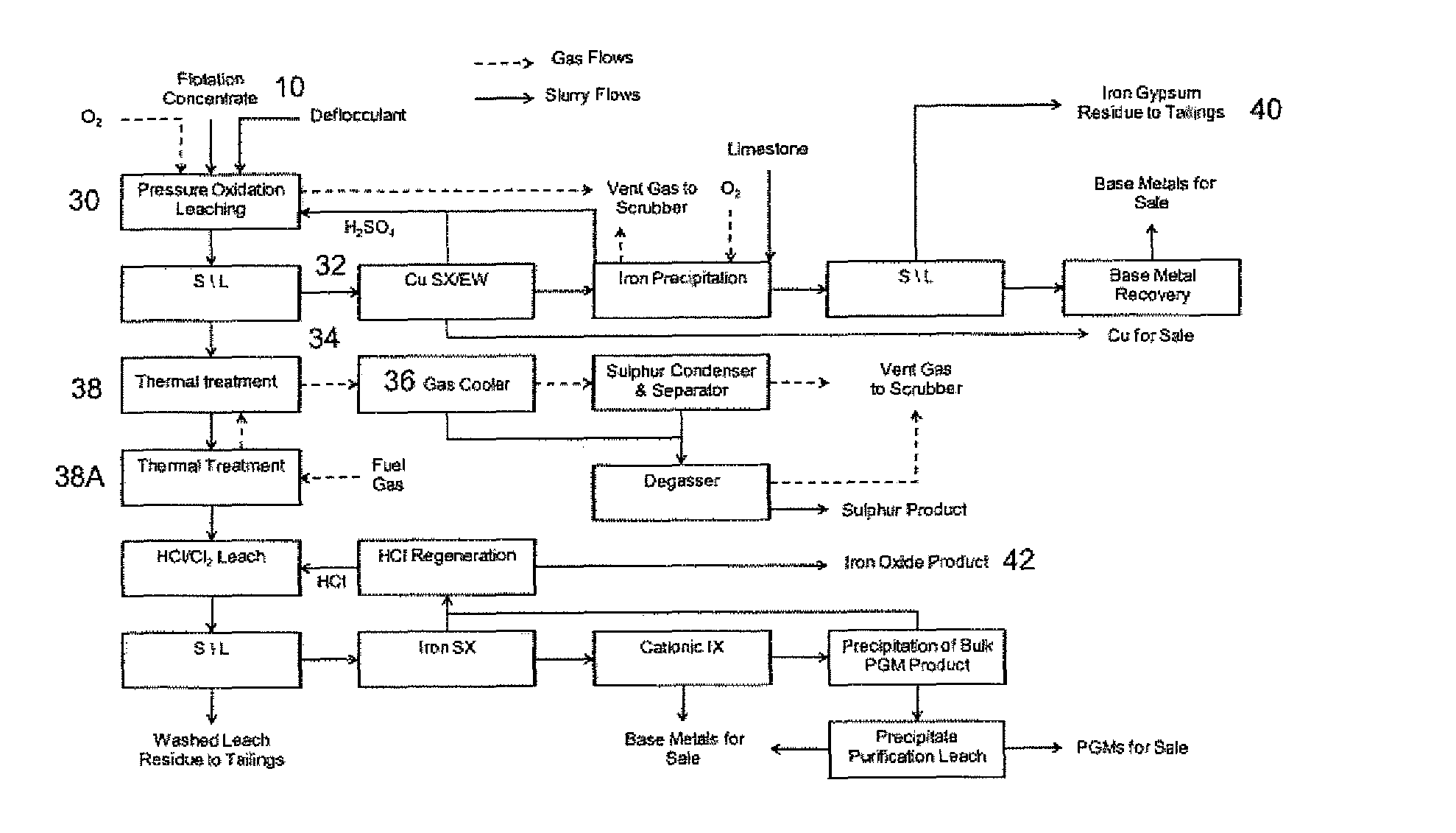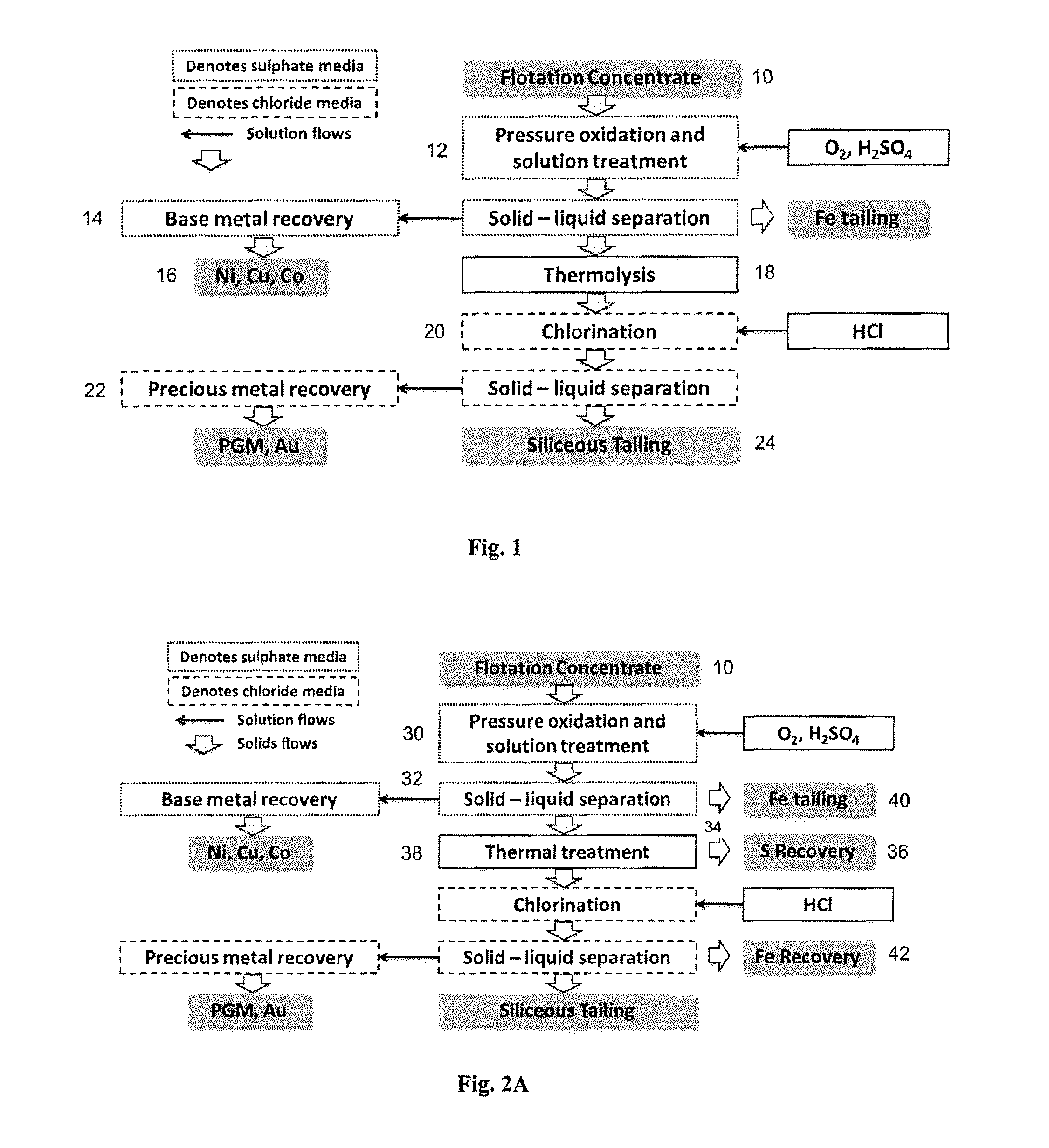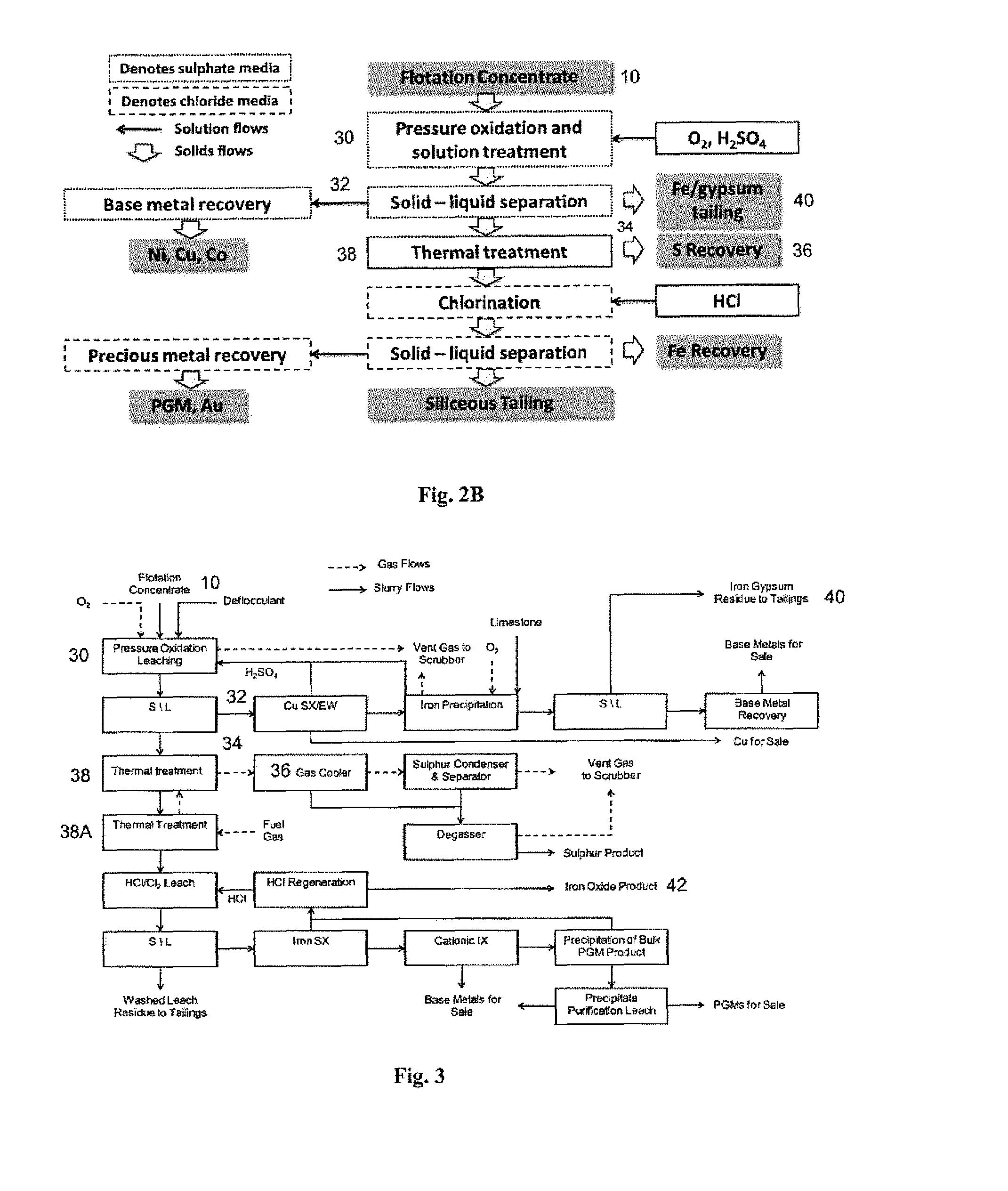Hydrometallurgical treatment process for extraction of metals from concentrates
a technology of concentrates and hydrometallurgical treatment, applied in the direction of process efficiency improvement, etc., can solve the problems of increasing metallurgical challenges, difficult depressing of pyrite and pyrrhotite, and difficulty in conventional processing of sulphide concentrates, etc., to achieve a higher overall metal recovery, preferably minimize water consumption, and increase the effect of mass pull
- Summary
- Abstract
- Description
- Claims
- Application Information
AI Technical Summary
Benefits of technology
Problems solved by technology
Method used
Image
Examples
example 1
Sulphate Conditioning Removal of Iron, Sulphur and Other Elements from PDX Residue
[0074]In this example the residue from a PDX treatment of a concentrate is subjected to an atmospheric hot sulphuric acid conditioning step to effect the removal of further iron and precipitated sulphate as well as other elements such as aluminium, magnesium, scandium, zinc, nickel, copper, cobalt, manganese, etc. This can be into a separate stream or into the same slurry stream as the PDX residue. Table 1 shows the enhanced Fe recovery after atmospheric teach.
TABLE 1Elemental Recoveries in POX and Atmospheric Leach StagesExtraction (%)StagePdPtAuNiCuCoFeChlorination 10.00.00.098.398.997.719.8residue(POX Test 1,225° C.)Chlorination 10.00.00.098.185.976.468.0residue (POXTest 1, 200° C. +Atm Leach)
example 2
Sulphate Conditioning Removal of Iron, Sulphur and Other Elements from PDX Residue
[0075]In this second example the residue from a PDX treatment of a low-grade concentrate is subjected to an atmospheric hot sulphuric acid conditioning step to effect the removal of further iron and precipitated sulphate as well as other elements such as aluminium, magnesium, scandium, zinc, nickel, copper, cobalt, manganese, etc. FIG. 5 shows the enhanced removal of iron as well as recovery of base metals, while leaving PGMs in the solids residue, for recovery in the downstream Kell unit processes.
example 3
Thermal Removal of Sulphur from a PDX Residue and Recovery of Sulphur into a Usable Form, Including as Sulphide Suitable for Use in the Process as a Precipitant of Base Metals and Precious Metals in the Sulphate and Chloride Streams
[0076]In this example two PDX residues containing sulphur were subjected a desulphurization step and the sulphur was shown to be removed from the solids, available for recovery from the gas phase. Thermal treatment was carried out on residue solids from PDX Test 1 and PDX Test 2 carried out under different conditions of pressure oxidation to achieve different sulphur speciation chemistries in the PDX residue solids. The tests were conducted in a rotary kiln at 950° C. under controlled atmospheric conditions. Results are summarized in Tables 2, 3 and 4. A higher mass loss was observed for the residue from PDX Test 1 and this relates to the extent of sulphur volatilization and the higher sulphate content in the PDX residue.
TABLE 2Summary of Elemental Recov...
PUM
| Property | Measurement | Unit |
|---|---|---|
| pressure | aaaaa | aaaaa |
| pressure | aaaaa | aaaaa |
| boiling point | aaaaa | aaaaa |
Abstract
Description
Claims
Application Information
 Login to View More
Login to View More - R&D
- Intellectual Property
- Life Sciences
- Materials
- Tech Scout
- Unparalleled Data Quality
- Higher Quality Content
- 60% Fewer Hallucinations
Browse by: Latest US Patents, China's latest patents, Technical Efficacy Thesaurus, Application Domain, Technology Topic, Popular Technical Reports.
© 2025 PatSnap. All rights reserved.Legal|Privacy policy|Modern Slavery Act Transparency Statement|Sitemap|About US| Contact US: help@patsnap.com



